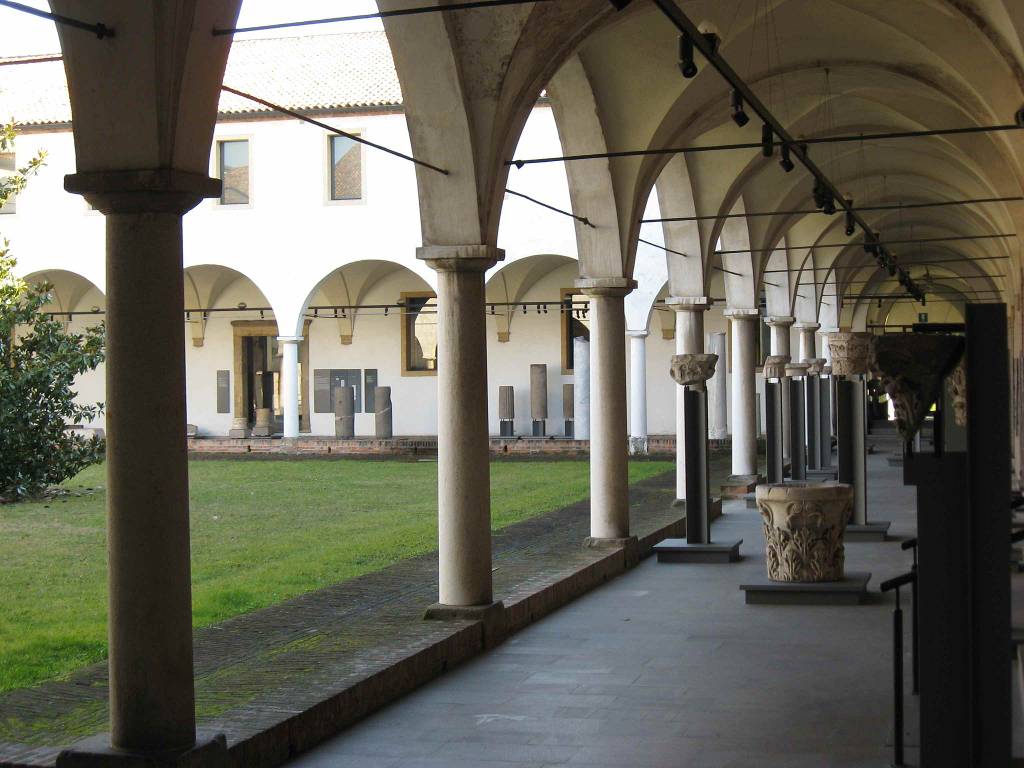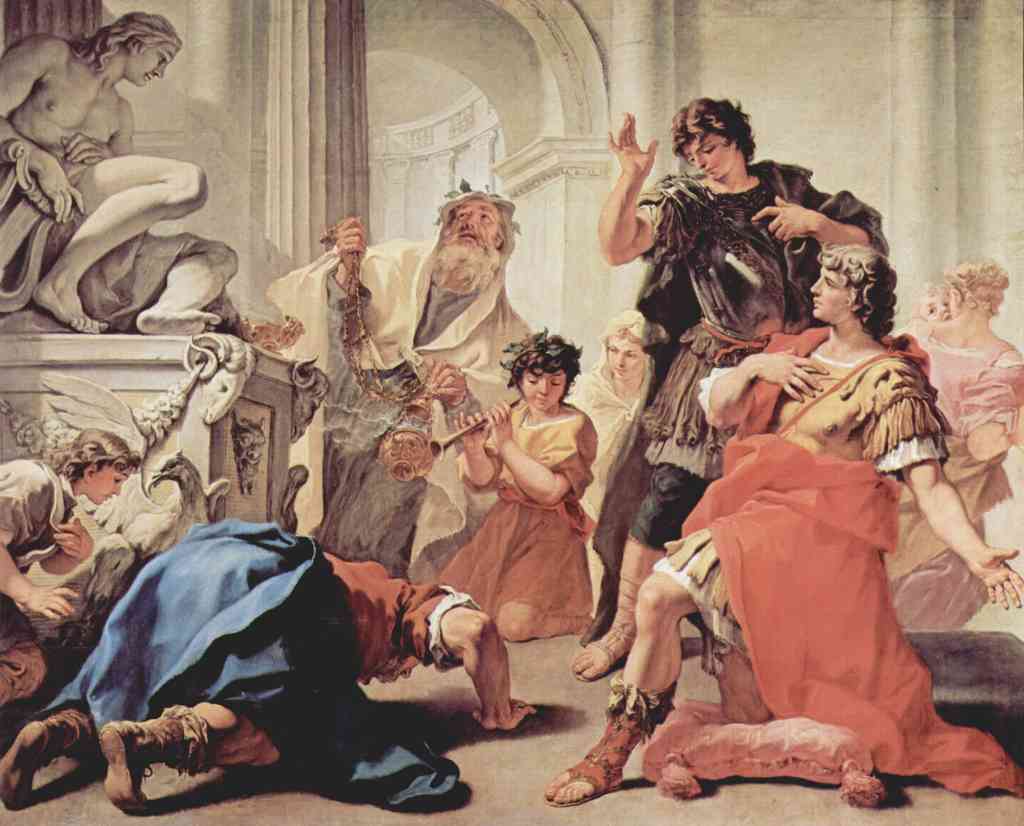Eremitani Civic Museums Piazza Eremitani, 8, Padua (PD), Veneto, Italy
Eremitani Civic Museums
The most important Paduan complex of museums features the Archaeological Museum and the Museum of Medieval and Modern Art in a charming former convent.

The museum complex is headquartered in Piazza Eremitani, in the cloisters of the former Augustinian monastery adjacent to the Church of the Eremitani. But the Eremitani Civic Museums encompasses a series of monumental sites and various museums located in different buildings in Padua, showcasing an expansive collection ranging from archaeological objects to medieval and modern art.
The Eremitani Civic Museums include:
the Archaeological Museum and the Museum of Medieval and Modern Art – both in the former convent
the nearby Scrovegni Chapel – a UNESCO World Heritage site as part of the Padova Urbs Picta with Giotto’s fresco masterpieces
the Museum of Applied Arts and the Bottacin Museum – housed in the separate premises of Palazzo Zuckermann
the Museum of the Risorgimento and Contemporary Age – set up on the Noble Floor of the Caffè Pedrocchi.
and historical sites: the Petrarch's house, the Oratory of Saint Roch, the Loggia and Cornaro Odeum, the Astronomical Clock Tower, the Oratory of Saint Michael, and the Palazzo della Ragione – the last two are also part of the UNESCO World Heritage propriety Padova Urbs Picta.
It is the oldest Venetian museum complex, active since the early decades of the nineteenth century. In 1825 abbot Giuseppe Furlanetto set up the first nucleus of the Archaeological Museum in the Palazzo della Ragione. The collection comprised Roman and Greek lapidary inscriptions and numerous works of art that decorated suppressed ecclesiastical institutions, such as the convent of San Giovanni da Verdara closed in 1783 and other religious bodies after 1810.
Later, with the growth of the collections, the headquarters was moved to the Museo al Santo, which remained in use until 1970.
The current location in the Cloisters of the Convent of the Eremitani was inaugurated in 1985 and then expanded with the opening of new rooms between 1997 and 2002.
Archaeological Museum
The Archaeological Museum collects valuable collections of artefacts from the Paleovenetian, pre-Roman and Roman periods that document life in the Paduan countryside from proto-history to the Roman age.
The Museum also includes an Egyptian section, which was created with the donations of the Paduan explorer and pioneer archaeologist Giovan Battista Belzoni, to whom a multimedia station is dedicated where it is possible to discover his deeds.
The itinerary begins with pre-Roman finds from the necropolis of Padua, dating from the eighth to the third century BC, decorated vases dating back to the third Atestine period, paleo-Venetian steles, votive objects, and bronzes from Etruscan, Italic and paleo-Venetian periods.
The Roman section presents numerous testimonies of ancient Patavium, such as the beautiful bust of Silenus, the funerary stone of the young dancer Claudia Toreuma, the monumental funerary shrine of the Volumnia, and numerous mosaics from the late Roman period.
The two rooms of the Egyptian section include two statues depicting the leontocephalous goddess Sekhmet, discovered during the exploration of Thebes, and some Aramaic papyri that he found on the Elephantine island. Belzoni is also responsible for the two sphinxes that decorate the entrance to the Hall of the Palazzo della Ragione.
The cloister passageway houses a rich lapidary collection consisting of columns, entablatures, capitals, friezes, and other architectural elements predominantly found in the Euganean Hills area.
Museum of Medieval and Modern Art
The Museum of Medieval and Modern Art houses a picture gallery with more than 3,000 works (of which about a quarter are exhibited) created by the great masters of Italian painting and an extensive collection of sculptures and decorative and architectural fragments.
The rooms dedicated to fourteenth-century art include Giotto's Crucifix, a work that previously stood above the altar of the Scrovegni Chapel, and some panel paintings by Guariento, including the Angels from the Chapel of the Palazzo Carrarese.
The Paduan art of the fifteenth century is well represented by Francesco Squarcione and particular the Lazara Altarpiece, a tempera polyptych showing saints Lucy, John the Baptist, Saint Jerome, Anthony Abbot, and Justina of Padua. He was the teacher, among others, of Andrea Mantegna, the author of the lost altarpiece of the Santa Sofia Church and the recovered decorations of the Ovetari Chapel in the transept of the Church of the Eremitani.
Among the many masterpieces of the sixteenth century stand out Birth of Adonis and The Legend of Polydoros, a pair of oil paintings on wood by Titian, the Madonna and Child by Boccaccio Boccacini, the Dinner at the house of Simone Fariseo and The Crucifixion by Tintoretto and some paintings by Veronese.
For the eighteenth-century section must be remembered the artworks of Giambattista Tiepolo: St. Joseph with the Child, Madonna, and Christ in the garden of olives.
Also inside the Pinacoteca are sculptures ranging from the Middle Ages to Antonio Canova, of which there are the marbles Alvise Valaresso as Asclepius, Giovanni Poleni, and the Stele Giustiniani.
Inside the Museum, there is also the multimedia room dedicated to Giotto's work in the Scrovegni Chapel, with seven multimedia stations that introduce visitors to the knowledge of the frescoes and the historical and artistic context in which Giotto worked.
The Civic Museums also have a Photographic Cabinet, which collects over 36,000 negatives, 2000 slides and many photographs regarding the city, some of them the result of donations from Paduan photographers.
We welcome all contributions, no matter how small. Even a spelling correction is greatly appreciated.
All submissions are reviewed before being published.
Continue to changelog-

© 'Chiostro dei Musei civici degli Eremitani a Padova' by Filippof is licensed under CC BY-SA 4.0 Attribution copied to clipboard Failed copying attribution to clipboard -

© 'Sculpture Garden' by joergens.mi is licensed under CC BY-SA 4.0 Attribution copied to clipboard Failed copying attribution to clipboard -

© 'St Michael Spearing Devil while Weighing Souls by Guariento' is licensed under CC0 1.0 Attribution copied to clipboard Failed copying attribution to clipboard -

We welcome all contributions.
All submissions are reviewed before being published.
We welcome all contributions, no matter how small. Even a spelling correction is greatly appreciated.
All submissions are reviewed before being published.
Continue to changelogWe welcome all contributions, no matter how small. Even a spelling correction is greatly appreciated.
All submissions are reviewed before being published.
Continue to changelogWe welcome all contributions, no matter how small. Even a spelling correction is greatly appreciated.
All submissions are reviewed before being published.
Continue to changelogCategory
Cost
-
The church, partially destroyed in 1944, preserves the remains of the splendid frescoes painted by Guariento and Andrea Mantegna
-
113 m
The Scrovegni Chapel houses one of the most outstanding masterpieces of figurative art of all time, the complete fresco cycle created by Giotto
-
The Roman Arena of Padua was an amphitheatre used for gladiator games in the ancient Patavium. The Arena ruins are now part of the Giardini dell'Arena park.
-
168 m
Part of the Eremitani Civic Museums complex, the palazzo houses the Museum of Applied and Decorative Arts and the Bottacin Museum in its rooms.
-
In Padua, the pedestrian streets from the city centre are known as Liston, an area extending from Piazza Garibaldi all along to Prato della Valle.



